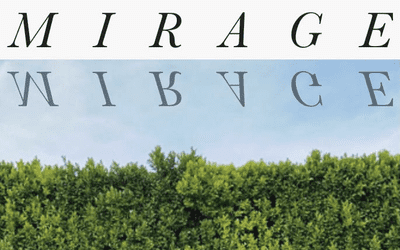Vol. XXIII, Issue 1
Mirage
Contributors:
Kate Westphal, Mary Utz, Dontay M. Givens, Amari Johnson, Lucy Henneker, Phia Spencer, Ethan Hesse, Jinny Kim, Weslie Wilkin, Grant Dutro, Caroline Park, Alani Oyola, Meghan Kwong, Anneka Weicht, Ryan Shepherd, Claudia Maxson, Jude Johnson, Ethan Emerson, Rachael Burtness
Letter From the Editor:
Dear Reader,
Mirage comes from the French verb mirer, meaning “to look at.” We often use it to describe the optical phenomenon in which light refracts and creates the appearance of water, often from the inverted reflections of distant objects. One of the most common examples is the water mirage in the desert, where the image of a blue lake appears on the distant horizon just below the surface of the desert sand. This “lake’’ is not a body of water but rather an upside-down image of the blue sky above.
Mirage can also refer to anything that is illusory, unattainable, misperceived, or even deceptive. We’ve all collided with mirages in some way—our fantastic hopes that vanish as we close-in on them, figments of our imaginations, the things we are desperately reaching for that disappear after we think we have already taken hold.
It is my experience that it is much too easy to dismiss the mirage in our life as mere delusion. As the contributors to this issue show, there is a multitude of ways in which we can grapple with, learn from, appreciate, and highlight both the beauty and disenchantment of mirage. Throughout this collection of their work, facades are built and torn down; far-away fantasy informs our reality; dichotomies show themselves to be not so contrasting after all.
My hope is that this collection inspires you to examine the mirage that comes your way: the mysteries, forgotten dreams, fantastical hopes, and crushing disappointments. There is so much to be discovered in those places.
Happy reading,
Bella McDonald ’24
Editor-in-chief
